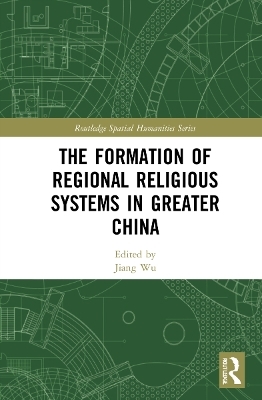
The Formation of Regional Religious Systems in Greater China
Routledge (Verlag)
978-1-032-10338-9 (ISBN)
The rise of Spatial Humanities has spurred a digital revolution in the field of Chinese studies, especially in the study of religion. Based on years of data compilation and analysis of religious sites, this book explores the formation of Regional Religious Systems (RRS) in Greater China in unprecedented scope and depth. It addresses quantitatively the enduring historical and contemporary issues of China’s deep-rooted regionalism and spatially variegated cultural and religious landscape.
A range of topics are explored: theoretical discussions of the concept of RRS; case studies of regional and local religious institutions; the formation of local cults and pilgrimage network; and the spread of religious networks to overseas Chinese communities and the Bon religion in Tibet. The book also considers long-standing challenges of researching with spatial data for humanities and social science research, such as data collection, integration, spatial analysis, and map creation.
This book will be of interest to students and scholars in Religious Studies, Cultural Studies, Chinese Studies, Digital Humanities, Human Geography and Sociology.
Jiang Wu director, Center for Buddhist Studies and professor, Department of East Asian Studies, College of Humanities, The University of Arizona, USA.
Introduction: Exploring Regional Religious Systems (RRS): Theoretical and Methodological Considerations. Part One: RRS and the Spread of Religious Sites in Medieval China. 1. Making and Marking Buddhist Sacred Space: Wuyue Buddhism and its Influence in the Song Dynasty (960–1279). 2. On the Spatio-temporal Analysis of Religious Institutions: A Study of the Jinhua Prefectural Gazetteer of 1480. Part Two: RRS and the Buddhist Pilgrimage Network in Late Imperial China. 3. Traversing the “Pilgrimage Square” of Northern China in the 19th Century. 4. The Ways of Travelling: A Historical GIS Examination of the Pilgrimage Routes Centered on Mt. Jiuhua in Late Imperial China. 5. Regional Systems of Guanyin Pilgrimages in the Lower Yangtze Delta during the Ming-Qing Period (1368–1912). Part Three: Regional Analysis of Modern and Contemporary Chinese Religions. 6. Mapping the Growth of Early Yiguandao Buddha-halls. 7. Churches at the Margin: Mapping the Establishment of Protestant and Catholic Churches in China, ca. 1949–2004. 8. Spatio-temporal Analyses of Changing Religious Landscapes in China. Part Four: Regional Formation in Periphery. 9. Historical GIS and the Study of Southeast China and the Southeast Asian Chinese Diaspora. 10. Using Geospatial Technologies to Study Regional Folk Religions: The Taiwan Religion Database and Two Case Studies. 11. A Regional Systems Approach to the Origin and Spread of the Bon Religion of Tibet. Dedication. Acknowledgement. Preface by Lewis Lancaster. List of Major Chinese Administrative Regions.Chronology of Chinese history.
| Erscheinungsdatum | 14.03.2022 |
|---|---|
| Reihe/Serie | Routledge Spatial Humanities Series |
| Zusatzinfo | 18 Tables, color; 42 Line drawings, color; 42 Illustrations, color |
| Verlagsort | London |
| Sprache | englisch |
| Maße | 156 x 234 mm |
| Themenwelt | Geschichte ► Teilgebiete der Geschichte ► Religionsgeschichte |
| Naturwissenschaften ► Geowissenschaften ► Geografie / Kartografie | |
| Sozialwissenschaften ► Soziologie ► Makrosoziologie | |
| Sozialwissenschaften ► Soziologie ► Spezielle Soziologien | |
| ISBN-10 | 1-032-10338-8 / 1032103388 |
| ISBN-13 | 978-1-032-10338-9 / 9781032103389 |
| Zustand | Neuware |
| Haben Sie eine Frage zum Produkt? |
aus dem Bereich


